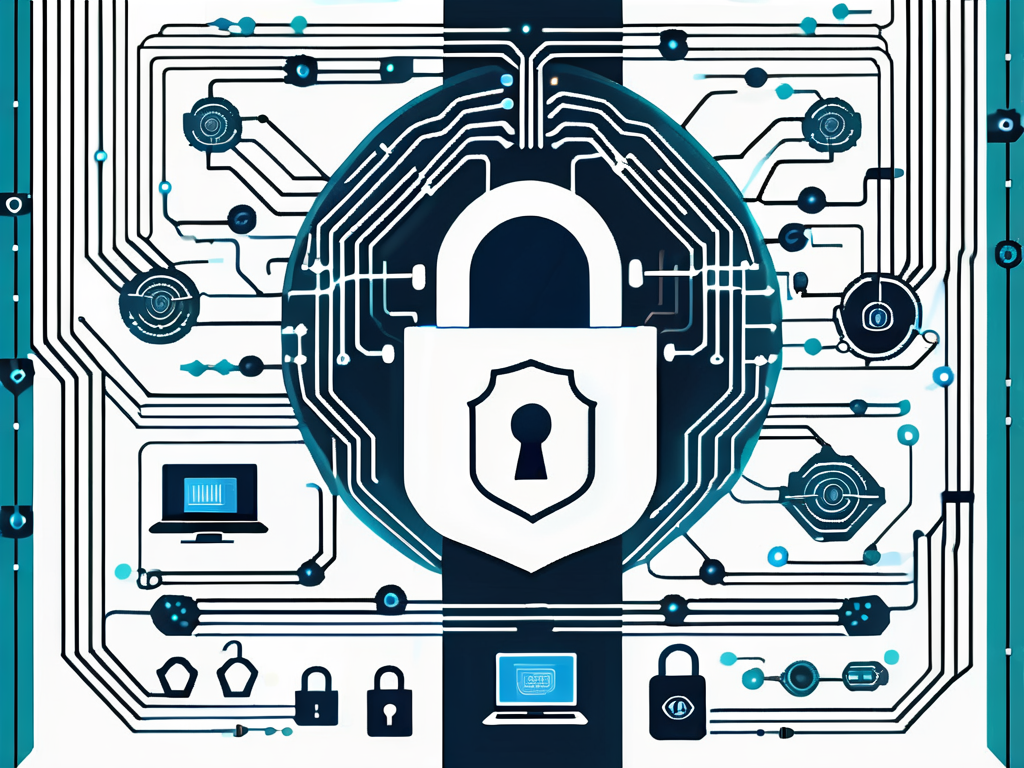
Cybersecurity has become a critical concern for businesses around the world. With cyber threats evolving at an alarming rate, it is essential for Australian Business Owners to have robust security measures in place to protect their valuable assets. Australian Small Business Owners, in particular, face unique challenges in this regard. To address these challenges and safeguard their operations, it is imperative for Australian businesses to understand and implement cybersecurity frameworks that are tailored to their specific needs.
Exploring the Latest Cyber Frameworks for 2024
In recent years, cyber security frameworks have evolved significantly to keep pace with the growing sophistication of cyber threats. These frameworks provide guidance and best practices for organizations to identify, protect, detect, respond to, and recover from security incidents. As we approach 2024, it is crucial for Australian businesses to stay updated with the latest cyber frameworks to ensure the highest level of security.
A Look at the Evolution of Cyber Security Frameworks
Cyber security frameworks have come a long way since their inception. Initially, they primarily focused on technical controls and risk management. However, as cyber threats became more complex and perpetrators more sophisticated, frameworks evolved to incorporate a holistic approach to cybersecurity. Today, frameworks encompass not only technical aspects but also organizational culture, governance, and human factors.
Let's delve deeper into the evolution of cyber security frameworks. With the rise of cloud computing, mobile devices, and the Internet of Things (IoT), organizations faced new challenges in securing their digital assets. Traditional frameworks were no longer sufficient to address these emerging threats. As a result, frameworks such as the National Institute of Standards and Technology (NIST) Cybersecurity Framework and the ISO 27001 standard were developed to provide a comprehensive and adaptable approach to cybersecurity.
Understanding the Importance of Cyber Security Frameworks
Implementing a cyber security framework is crucial for Australian businesses for several reasons. Firstly, frameworks provide a structured approach to assessing and managing cyber risks. They help identify vulnerabilities, prioritize risks, and allocate appropriate resources to mitigate threats effectively. By following a framework, organizations can ensure that no critical aspect of cybersecurity is overlooked, reducing the chances of a successful cyber attack.
Moreover, cyber security frameworks enhance communication and collaboration between different stakeholders within an organization. They establish a common language and understanding of cybersecurity, enabling effective coordination between IT teams, management, and employees. This collaboration is essential in responding to security incidents promptly and minimizing their impact on business operations.
Lastly, frameworks enable businesses to demonstrate their commitment to cybersecurity to external stakeholders. In an era where data breaches and cyber attacks dominate headlines, customers, partners, and regulators are increasingly demanding evidence of robust security measures. By implementing a recognized framework, organizations can provide assurance that they have taken the necessary steps to protect sensitive information and maintain the trust of their stakeholders.
Demystifying Cyber Security Frameworks
While cyber security frameworks may seem complex and overwhelming at first glance, it is essential to understand their significance and break them down into manageable components. By doing so, Australian businesses can gain a clear understanding of how frameworks can be effectively implemented to protect their assets.

Cyber security frameworks serve as the backbone of a company's defense against the ever-evolving landscape of cyber threats. These frameworks provide a structured and systematic approach to identifying, assessing, and mitigating risks, thereby fortifying the organization's resilience to potential attacks. By establishing a robust framework, businesses can proactively safeguard their sensitive data, intellectual property, and reputation from malicious actors.
The Role of Cyber Security Frameworks in Protecting Businesses
Cyber security frameworks play a crucial role in protecting Australian businesses from cyber threats. They provide a structured approach to identify and address vulnerabilities, ensuring that appropriate security measures are in place. These frameworks enable organizations to establish policies and procedures, implement technical controls, and train employees on best practices for cybersecurity. By following the guidelines outlined in these frameworks, businesses can significantly reduce their risk exposure and enhance their overall security posture.
Moreover, cyber security frameworks not only protect businesses from external threats but also enhance internal processes and operations. By adhering to a comprehensive framework, organizations can streamline their security protocols, improve incident response times, and foster a culture of security awareness among employees. This holistic approach not only bolsters the company's defense mechanisms but also instills confidence in customers, partners, and stakeholders regarding the organization's commitment to cybersecurity.
Key Components of a Cyber Security Framework
When implementing a cyber security framework, several key components need to be considered. These components include risk assessment, threat intelligence, incident response, employee training, and continuous monitoring. By focusing on each of these components, Australian businesses can build a comprehensive and robust cybersecurity framework that safeguards their critical assets.
Risk assessment forms the foundation of a cyber security framework, allowing organizations to identify and prioritize potential threats based on their likelihood and impact. Threat intelligence provides crucial insights into emerging cyber threats, enabling proactive mitigation strategies to be implemented. Incident response protocols ensure that organizations can effectively contain and remediate security breaches, minimizing the impact on operations. Employee training is essential in cultivating a security-conscious workforce that can recognize and respond to potential threats. Continuous monitoring allows businesses to detect and respond to security incidents in real-time, ensuring ongoing protection against evolving cyber risks.
Essential Cyber Security Frameworks for Australian Businesses
There are several essential cyber security frameworks that Australian businesses should familiarize themselves with. One such framework is the Australian Signals Directorate (ASD) Essential Eight. This framework provides guidelines on the most effective security controls to prevent cyber incidents. By implementing these eight controls, businesses can significantly increase their resilience against a wide range of cyber threats.

A Deep Dive into the ASD Essential Eight Framework
The ASD Essential Eight framework focuses on eight key areas that organizations should prioritize to enhance their cybersecurity. These areas include application whitelisting, patching applications, configuring Microsoft Office macros, user application hardening, restricting administrative privileges, patching operating systems, multi-factor authentication, and daily backups. By implementing these measures, Australian businesses can protect themselves against common cyber threats.
Navigating Compliance with the Essential Eight Framework
While implementing the ASD Essential Eight framework is crucial, businesses must also navigate compliance requirements. Compliance ensures that organizations meet specific standards and regulations set by relevant authorities. It is essential for Australian businesses to understand the compliance requirements associated with the framework they choose to implement.
Australian Cyber Security Frameworks Unveiled
In addition to the ASD Essential Eight, there are other Australian cyber security frameworks that businesses should be aware of. One such framework is the Australian Energy Sector Cyber Security Framework (AESCF). This framework provides guidance for the energy sector on how to protect critical infrastructure from cyber threats.

An Overview of the AESCF Program for the Energy Sector
The AESCF program focuses on the unique cybersecurity challenges faced by the energy sector. It provides guidelines and best practices for organizations to assess and manage cyber risks specific to their operations. By following the AESCF program, Australian energy sector businesses can enhance their resilience against cyber threats and ensure the reliable and secure supply of energy to the nation.
Decoding the Australian Government Protective Security Policy Framework
The Australian Government Protective Security Policy Framework (PSPF) is another essential framework that businesses need to understand. The PSPF sets out the Australian Government's policies and practices to protect its people, information, and assets. By aligning their security measures with the PSPF, Australian businesses can ensure they meet the highest security standards and protect sensitive government information they may handle.
Understanding the Role of the Australian Signals Directorate in Cyber Security
The Australian Signals Directorate (ASD) plays a critical role in ensuring the cybersecurity of Australian businesses and government entities. As the nation's leading authority on cyber security, the ASD provides guidance, advice, and support to organizations in their efforts to protect against cyber threats. Understanding the role of the ASD is essential for businesses, as their guidance and resources can greatly assist in achieving robust cybersecurity frameworks.
Global Cyber Security Standards and Frameworks
While Australian businesses need to focus on implementing domestic cyber security frameworks, it is also essential to consider global standards and frameworks. These global frameworks provide valuable insights and best practices that can enhance the effectiveness of cybersecurity measures.
Exploring the Impact of COBIT on Information Technology Security
The Control Objectives for Information and Related Technologies (COBIT) framework is a globally recognized standard for IT governance and management. By implementing COBIT, organizations can align their IT strategies with business objectives while ensuring the security, availability, and integrity of information. Australian businesses can benefit from adopting COBIT as it provides a comprehensive framework to manage the risks associated with information technology.
Leveraging the CIS Controls for Enhanced Cyber Security
The Center for Internet Security (CIS) Controls is another globally recognized framework that is widely used to enhance cybersecurity. These controls cover various critical areas, including email and web browser protection, secure configurations for hardware and software, and continuous vulnerability assessment and remediation. By leveraging the CIS Controls, Australian businesses can strengthen their security posture and stay resilient against evolving cyber threats.
As the threat landscape continues to evolve, it is essential for Australian businesses to stay abreast of the latest cybersecurity frameworks and best practices. By understanding and implementing these frameworks, organizations can ensure the highest level of protection for their valuable assets. Cybersecurity is not a one-time effort but an ongoing commitment that requires continuous improvement and adaptation. By investing in cybersecurity frameworks, Australian businesses can thrive in the digital landscape and effectively mitigate the risks posed by modern cyber threats.
If You Would like to learn more about our Cybersecurity Services, click the link below:


